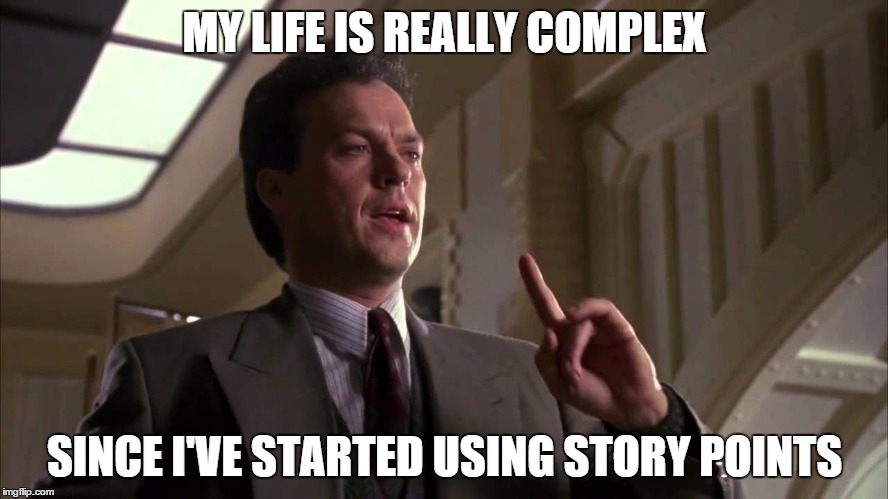 I don’t like story points. I think this is part of my crusade against complexity. You can catch a glimpse of it here.
I don’t like story points. I think this is part of my crusade against complexity. You can catch a glimpse of it here.
Story points were invented as supporting beams for the bridge between business and development that would later be called agile.
They started with a very good concept that wasn’t there before: The story.
Remember those hundred page specs, and detailed feature documents? With the Agile Manifesto, we decided we liked customer collaboration over those. In XP, there was a customer on-site, so time would not be wasted on writing those documents, reading them, misinterpreting them and developing the wrong things in them.
And so the story replaced the feature. It was no longer “something that the application allows”, but also had a “Why” element. In XP, that story was translated into tests in TDD. Years later, stories would find themselves replacing specs in BDD. Actual examples of how a user would use the system and why.
Now in the days before agile (and, believe it or not, sometimes even today), once we had a story, the next question would immediately pop: When will it be done?
Developers hate that question. There’s a whole #NoEstimates discussion built around this question alone. (You can read some of it here, here and here).
The dysfunction with the estimation is that it was considered a commitment. So to make sure they have met that commitment, developers needed to invest more time in getting the estimate accurate.
The story point is an abstraction that solved both problems. It had no units, so it can’t be related to any commitments. And if you asked the right questions (“How is this compared to that thing we did last time”) it would save a bunch of time on the estimation process. You just compare things until they are basically the same, instead of analyzing each story on its own.
It seemed that all our problems were solved!
Well, not really.
The business people still wanted to know how long the story would take. And not only the story, the whole backlog. The answer was very simple: assign hours or days to a story point. So a story point would becomes another unit.
This is like measuring in Celsius and Fahrenheit in the same project.
This conversion could be done the easy way or the hard way. We took the hard way, of course. So we analyzed and measured and estimated what a story point equals, taking away the 2nd advantage of the story point.
We’ve also built separate processes with the new units. In Planning Poker, we used Fibonacci numbers to estimate stories. That was another scale for the unit. Which is like converting Celsius into a non-linear scale.
And then we have velocity that was measured in story points. Because the velocity was calculated based on the estimated effort, not the actual delivery. So now the team is measured according to their estimation, rather than their delivery, in imaginary units, with the incorrect values. And those values are used for the next estimation. That’s like taking the weather forecast from last month and applying it this month, instead of opening the window.
Story points did not save developers from answering the dreaded question “when will it be done?”. It required them to translate between systems twice, and give back an answer in time units. The translation just wasted more time.
We can arrive at the same results with time units.
In the end, we just achieved more work, more confusion, and more complex tools by project management tool vendors who happily gave us yet another way to shoot ourselves in the foot.
Ron Jeffries was quoted recently “I’m not sure if I was the inventor of story points, but if I am, I’m sorry”.
Story points seemed a good idea at the time. They grew more complex and took over our lives, making them harder. If you’re using story points, you’re doing it wrong.
13 comments on “The Story with Story Points”